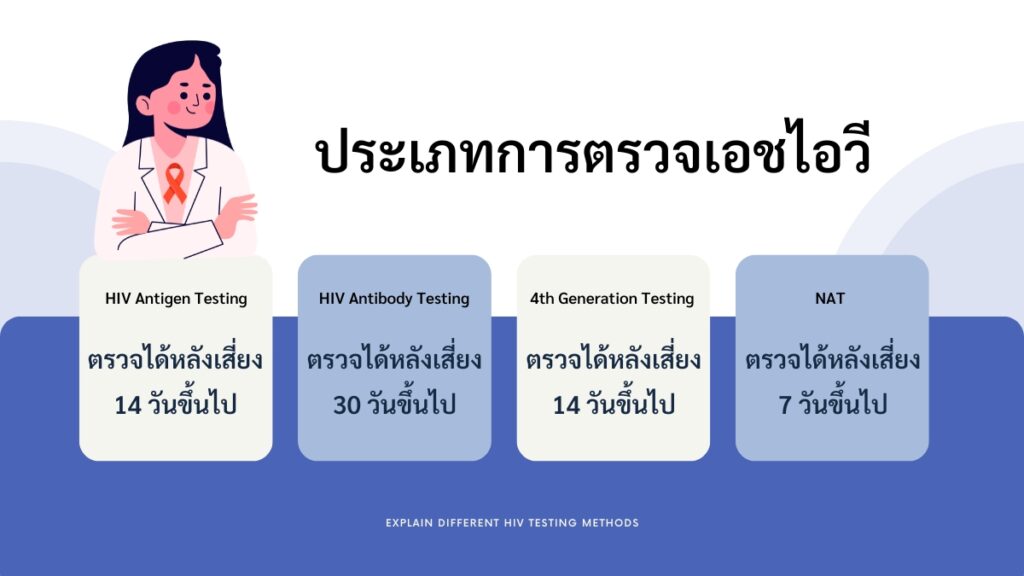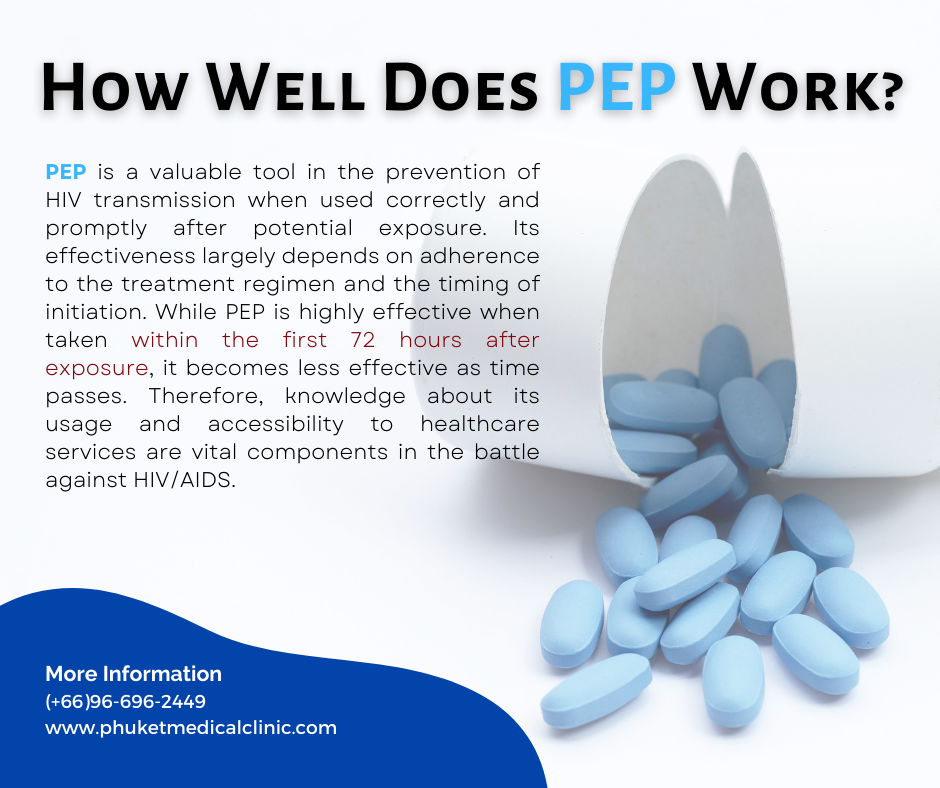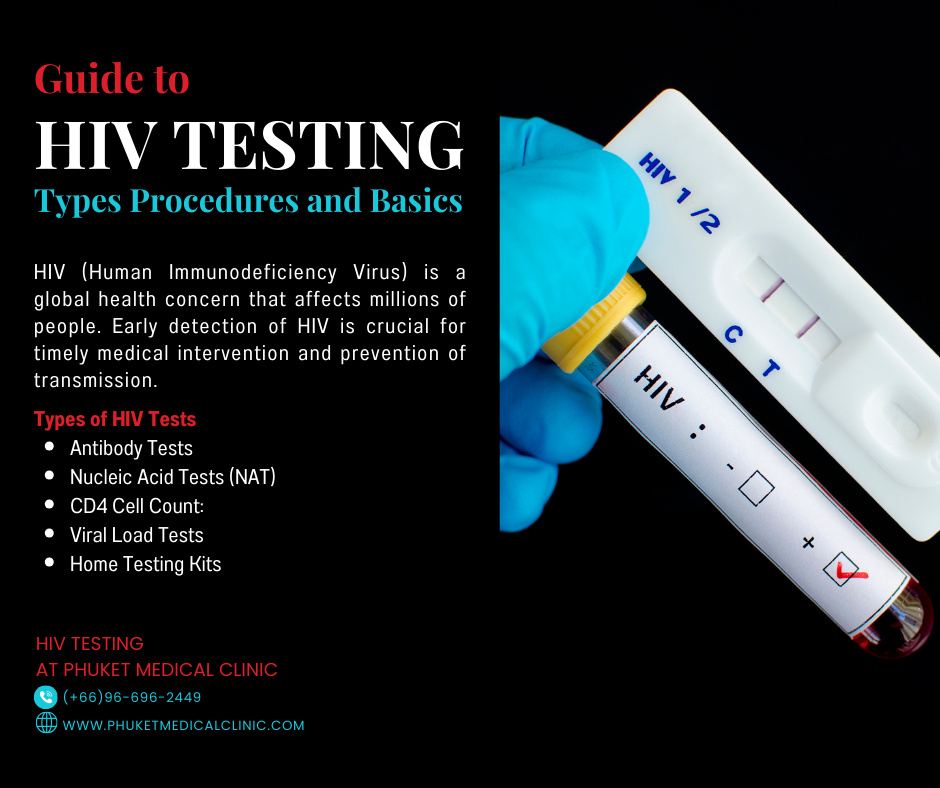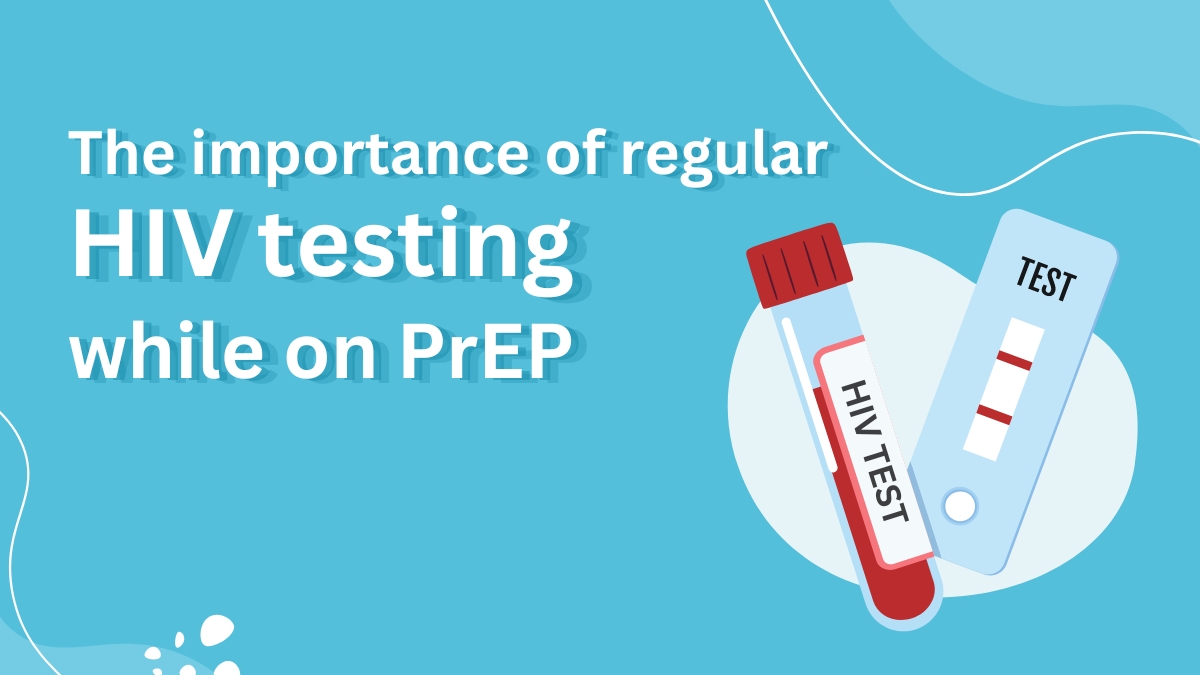The Window Period in HIV is a critical timeframe that plays a pivotal role in HIV testing accuracy. It refers to the time between HIV infection and the point at which a specific HIV test can reliably detect the virus in the body. This article explores the significance of the Window Period, its duration, and the implications for individuals seeking HIV testing and prevention.
How Do You Get PrEP
Pre-exposure prophylaxis, or PrEP, is a powerful tool in the fight against HIV. It’s a medication that, when taken as prescribed, can significantly reduce the risk of HIV transmission. But how do you get PrEP, and what steps do you need to follow? In this article, we’ll walk you through the process, from understanding the basics to obtaining a prescription and finding affordable options.
How Well Does PEP Work?
Post-Exposure Prophylaxis, or PEP, is a medical intervention that has gained prominence as a vital component of HIV prevention. PEP is a regimen of antiretroviral medications prescribed to individuals who may have been exposed to the virus through activities like unprotected sex, needle sharing, or occupational accidents. This article aims to shed light on how well PEP works, its effectiveness, and the crucial factors that influence its success in preventing HIV transmission.
Guide to HIV Testing: Types Procedures and Basics
HIV (Human Immunodeficiency Virus) is a global health concern that affects millions of people. Early detection of HIV is crucial for timely medical intervention and prevention of transmission. In this article, we’ll delve into the various types of HIV tests, the testing process, and some fundamental HIV basics that everyone should be aware of.
The importance of regular HIV testing while on PrEP
Regular HIV testing is an essential component of maintaining sexual health and preventing the spread of HIV, especially for individuals on Pre-Exposure Prophylaxis (PrEP). PrEP is a highly effective preventive medication that reduces the risk of contracting HIV. However, relying solely on PrEP without regular testing may lead to missed opportunities for early detection and timely intervention. Regular HIV testing while on PrEP serves multiple purposes: it helps identify early HIV infection, monitors the effectiveness of PrEP, and prevents the development of drug resistance. In this article, we will explore the importance of regular HIV testing for individuals on PrEP, the benefits it offers, the recommended testing frequency, and the significance of combining testing with PrEP usage. By prioritizing regular testing, individuals on PrEP can ensure their sexual health and contribute to HIV prevention efforts.
The Importance of HIV Testing
HIV testing plays a crucial role in promoting the health and well-being of everyone. Early detection of the infection is a key factor in preventing the spread of HIV and ensuring timely access to treatment. In this article, we will explain the importance of HIV testing, focusing on the benefits and addressing common misconceptions. Understanding the stages of HIV infection and its implications lays the foundation for why HIV testing is significant. Phuket Medical Clinic has explored various types of HIV testing and placed special emphasis on blood tests. For HIV detection among service users, along with the advantages of problem-solving through testing. We emphasize the importance of regular HIV testing. Our medical team is committed to enabling individuals to take control of their health and actively participate in a future of well-being.

Overview of HIV and Transmission
The Human Immunodeficiency Virus (HIV) is a virus that attacks the immune system, specifically targeting CD4 cells (also known as T-helper cells), which play a crucial role in preventing various infections from entering the body. Over time, HIV weakens the immune system, making individuals more susceptible to acquiring different diseases. If left untreated, the virus progresses to its final stage known as Acquired Immunodeficiency Syndrome (AIDS), which can ultimately result in death.
HIV is primarily transmitted through certain bodily fluids, including blood, semen, vaginal fluids, and breast milk. The most common modes of HIV transmission are:
- Unprotected Sexual Intercourse: HIV can be transmitted through sexual intercourse involving the exchange of bodily fluids, such as vaginal fluids, semen, or rectal fluids, with an infected individual, particularly when there are open sores, fresh wounds, or inflamed mucous membranes.
- Sharing Injection Equipment: HIV can be transmitted by sharing injection equipment, such as needles, syringes, or other drug paraphernalia, that is contaminated with the virus.
- Mother-to-Child Transmission: HIV-infected mothers can transmit the virus to their unborn or newborn babies during pregnancy, childbirth, or through breastfeeding.
- Blood Transfusion and Organ Transplantation: Although it is currently rare due to stringent screening processes in Thailand, HIV can be transmitted through blood transfusion or organ transplantation from an infected donor.
- Medical Accidents: Healthcare personnel or medical staff may be at risk of HIV transmission through accidental needle sticks or cuts from infected patients without intention.
HIV is not transmitted through
However, HIV is not transmitted through casual contact such as hugging, handshaking, or using shared objects. Additionally, it does not spread through the air, water, insects, or activities such as kissing, coughing, or sneezing. To prevent HIV transmission, it is important to practice safe behaviors, such as:
- Avoid sharing needles or drug paraphernalia with others.
- Use condoms correctly and consistently during sexual intercourse.
- Regularly get tested for HIV and encourage your partner to do the same.
- Promote the use of Pre-exposure prophylaxis (PrEP) to control the spread of infection.
- Plan your family by consulting with a healthcare provider and getting tested for HIV, both for the husband and wife.
Early diagnosis of HIV is crucial as it enables everyone to access appropriate medical care and treatment. For example, treatment with antiretroviral therapy (ART) can help suppress the replication of the virus, improve immune system function, and reduce the risk of transmitting HIV to others.

Benefits of HIV Testing and Knowing Your Blood Status
The benefits of HIV testing and knowing one’s own status are significant, including:
- Early treatment and improved health outcomes
- If someone gets tested for HIV and receives a positive blood test result, early detection can help them start appropriate medical care and treatment as soon as possible. Treatment with antiretroviral therapy (ART) helps suppress the virus, slow down the progression of HIV, and enhance immune function. Starting treatment early can significantly improve health outcomes, increase life expectancy, and reduce the risk of HIV-related diseases.
- Preventing the transmission to others
- Individuals who are aware of their HIV-positive status can take steps to prevent the transmission of the virus to others. By adhering to treatment and achieving a low viral load (the amount of HIV in the blood that is undetectable by standard tests), the risk of transmitting HIV to sexual partners is significantly reduced. This approach is known as U=U (Undetectable equals Untransmittable), meaning that when the virus is undetectable, it cannot be transmitted.
- Access to support services and care
- Knowing one’s HIV status enables individuals to access various support services, connect with healthcare professionals, counselors, and specialized support groups in HIV care. These resources provide emotional support, guidance, education, and practical assistance in managing HIV.
Knowing HIV status
- Making informed decisions about relationships and sexual health
- Being aware of one’s HIV status helps in making informed decisions about relationships and sexual health. It enables open and honest conversations with partners about HIV prevention and the use of barrier methods to protect oneself and one’s partner. Additionally, if an HIV-positive individual desires to have children, they can consult with healthcare professionals to explore safe pregnancy options and prevent transmission of the virus to the unborn baby.
- Participation in HIV prevention strategies
- Knowing one’s HIV status motivates individuals to take proactive measures in preventing HIV transmission. They can actively participate in safer sexual practices, consistently and correctly use condoms, access harm reduction services for substance users, and promote HIV awareness and education within their communities.
Finally, knowing one’s HIV status brings peace of mind, eliminates uncertainty, and empowers individuals to take control of their health. Regular testing and awareness of HIV status can reduce anxiety, promote self-care. And enable individuals to live happy and fulfilling lives while managing their HIV status effectively. Overall, knowing one’s HIV status is crucial for well-being. HIV prevention, accessing appropriate care and support, and making informed decisions about relationships and reproductive health. It is an essential step towards effectively managing HIV and leading a healthy life.

Types of HIV Testing
There are several types of HIV testing methods, including:
- HIV p24 Antigen Testing, which detects the antigen of the virus (HIV p24 Antigen), is used for early HIV detection approximately 14 days or 2 weeks after potential exposure. During this period, the body may not have developed sufficient antibodies to fight against HIV. However, it is still recommended to have additional testing using other methods.
- Anti-HIV Testing, which detects the antibodies produced by the body in response to HIV infection, is used for HIV testing after a potential exposure, typically from 30 days or 4 weeks onwards. This method is the most commonly used as it provides fast results within 1-2 hours.
- HIV Ag/Ab Combination Assay, also known as Fourth Generation testing or Gen 4th testing. This is a method that simultaneously detects the specific antibodies to HIV and the HIV p24 Antigen using a specialized test kit. This type of assay is widely used nowadays and provides the earliest detection of the infection. As early as 14-15 days after exposure.
The fastest way to test for HIV at the moment.
- Nucleic Acid Amplification Testing (NAT) for HIV, also known as viral load testing, is used to measure the quantity of the HIV virus before and after treatment. This method is highly sensitive and provides rapid results. Detecting the infection as early as 3-7 days after exposure, without the need to wait for up to 14 days. It is commonly used by healthcare professionals for individuals at high risk of HIV infection and is employed in screening blood donations.
Please note that these tests are used for screening and preliminary detection. If the test results are positive, further confirmatory testing is necessary to confirm the HIV diagnosis. Confirmatory testing often involves more specialized laboratory procedures. It is advised to consult with a healthcare professional to determine the most appropriate testing methods.
HIV testing plays a crucial role in personal and public health. It is essential for screening, prevention, and early management of HIV infection. Routine testing allows for timely intervention, access to appropriate care, and reduces the risk of transmission. Overcoming various barriers such as stigma, lack of awareness, limited access, and concerns about confidentiality is important. Ensuring comprehensive testing, including regular health check-ups and HIV screening. Enables a comprehensive assessment of overall health and early detection of other conditions. Education, accessible testing options, and community involvement are key in promoting acceptance of testing and effectively managing these factors. Improving health outcomes and minimizing the impact of HIV on individuals and communities are the ultimate goals.






